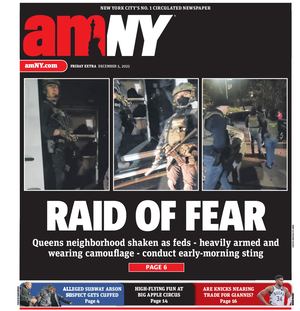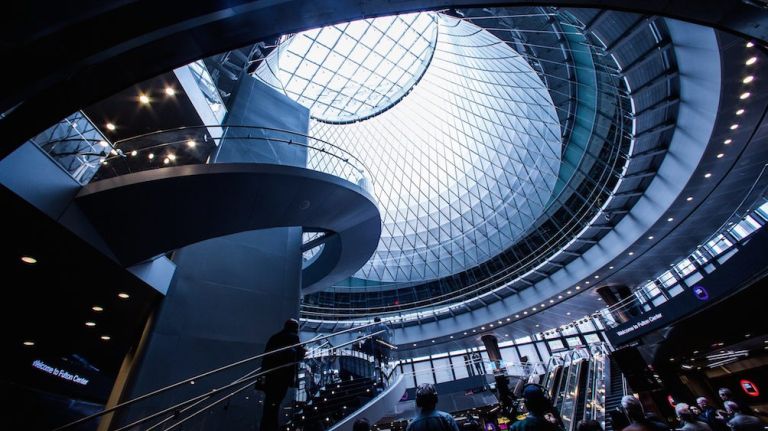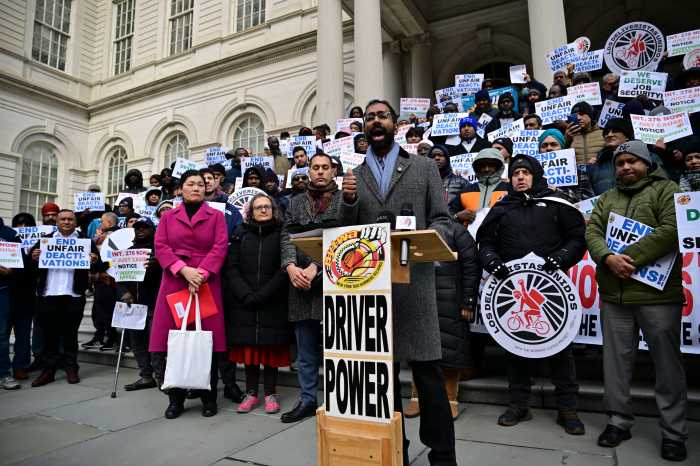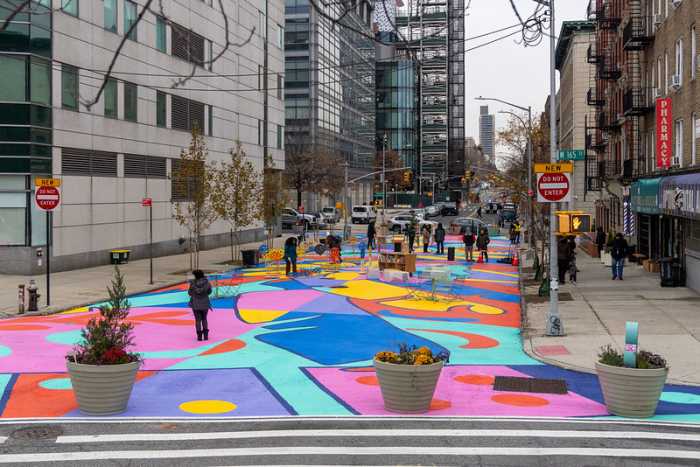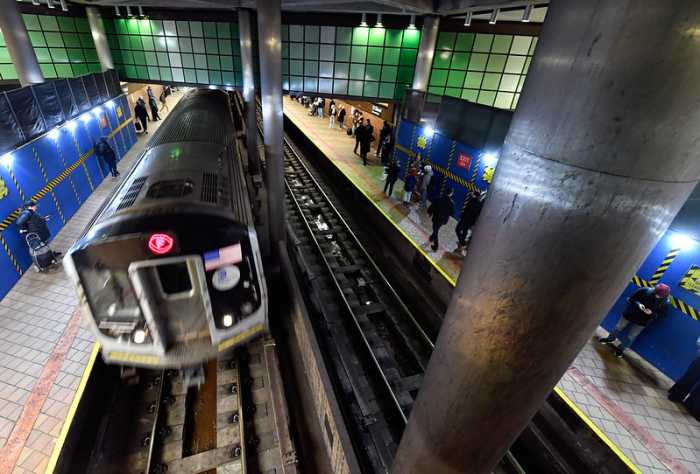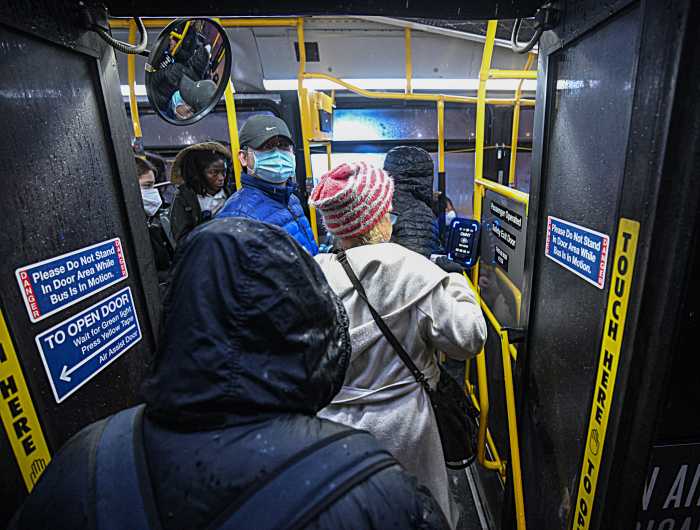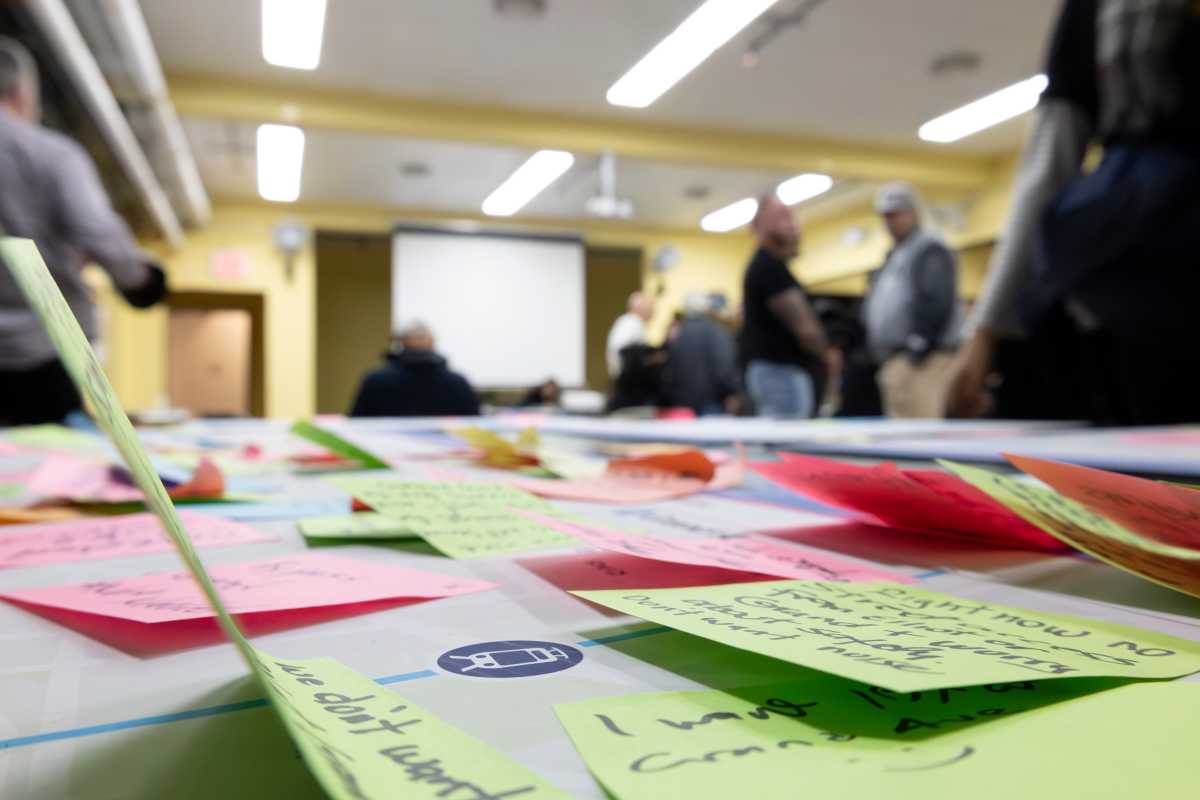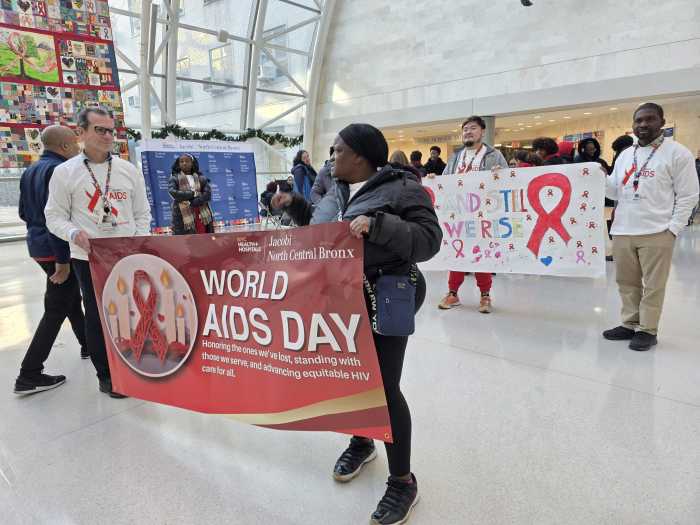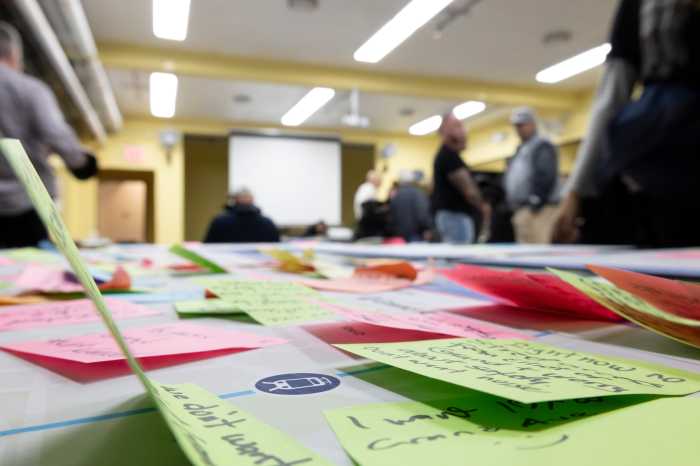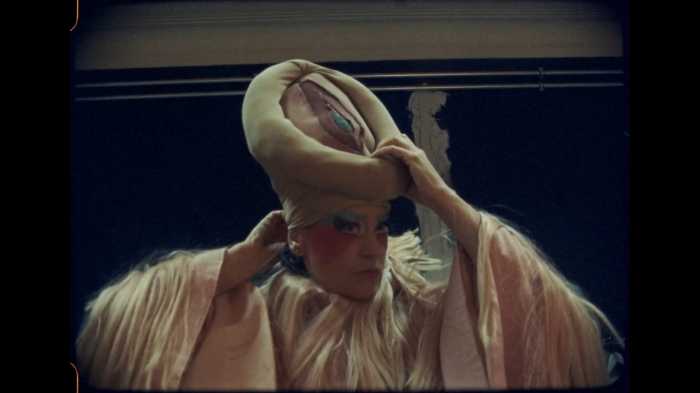
Starting on Monday, throngs of subway riders from nine train lines will be able to maneuver through a sleek, modern transit hub that was 10 years and $1.4 billion in the making.
Fulton Center unites three turn-of-the-century train lines in a facility designed to end the byzantine paths to transfer among the Fulton Street stations, opens access to the transit system in lower Manhattan with 27 entrances and will be a destination for travelers with 60,000 square feet of retail and commercial space.
The multi-level center, which will serve about 300,000 people daily, converges at Broadway and Fulton Street around a 58-foot-wide skylight “oculus” reaching 108 feet into the air that reflects daylight down through the building with nearly a thousand aluminum panels.
At a ribbon cutting Sunday, MTA CEO and Chairman Thomas Prendergast said Fulton Center is proof that New York City is “still thinking big.”
“Great cities like New York need great public spaces to grow and to thrive,” Prendergast said. “They create community, they’re our brand and they define our city: the lions at the New York Public Library, the clock in the middle of Grand Central Terminal, and now, this jaw-dropping oculus.”
Easier transfers
While dazzling light fixtures, large digital screens and shopping may be eye-catching for riders, the real benefits will be the ease of transferring among trains — A, C, 2, 3, 4, 5, J and Z.
The Fulton Street stations had a reputation of having a tight and confounding layout.
“It was a nightmare to take the trains from here,” said Michael Horodniceanu, head of the MTA capital construction who had an office downtown during the 1980s. “You never knew in which direction you were headed.”
Before, transferring between the A/C trains to the 4/5 meant passengers had to squeeze through a few doors that funnel them towards the first set of train cars.
Now, riders can walk on the stylishly well-lit A/C mezzanine that broadens access to the entire platform of the 4/5 station.
Horodniceanu countered criticism that a $1.4 billion project like Fulton Center does nothing to increase train capacity by noting smoother transfers and even boarding.
“That will move the trains,” he said. “The dwell time in the station many times impacts the flow of traffic. So once you’re going to be able to do that, you’re going to improve the flow throughout the system.”
Meanwhile, the 2/3 and J/Z stations were upgraded and got new entrances. The MTA also restored the Corbin Building — one of New York City’s first skyscrapers, designed in 1888 — to integrate into Fulton Center.
Fulton Center also includes the 350-foot Dey Street Concourse that provides an underground connection to the R train Cortlandt Street station.
New Downtown
As riders start flowing through Fulton Center, there will be more work before its full potential will be realized.
Nearby, the Port Authority’s World Trade Center Transportation Hub — a controversial $4 billion transit complex from Spanish architect Santiago Calatrava that is among the world’s most expensive — must be completed before there can be connections from Fulton Center to the E, 1 and PATH trains. The Port Authority’s project is expected to finish next year.
And almost a year after the MTA named Westfield Group to manage the space for shops, restaurants, kiosks, and commercial space, there are no stores yet to welcome riders to the shiny new facility. Those spaces are expected to be filled over the next year.
But officials at the unveiling ceremony saw Fulton Center’s promise as a premiere downtown destination and regional transit hub — “a vital element of the 24/7, 365 new downtown,” Sen. Charles Schumer said. .
“I’m certain,” Schumer said, “Fulton Center will become an iconographic cornerstone of a rejuvenated and reimagined Fulton Street corridor.”
